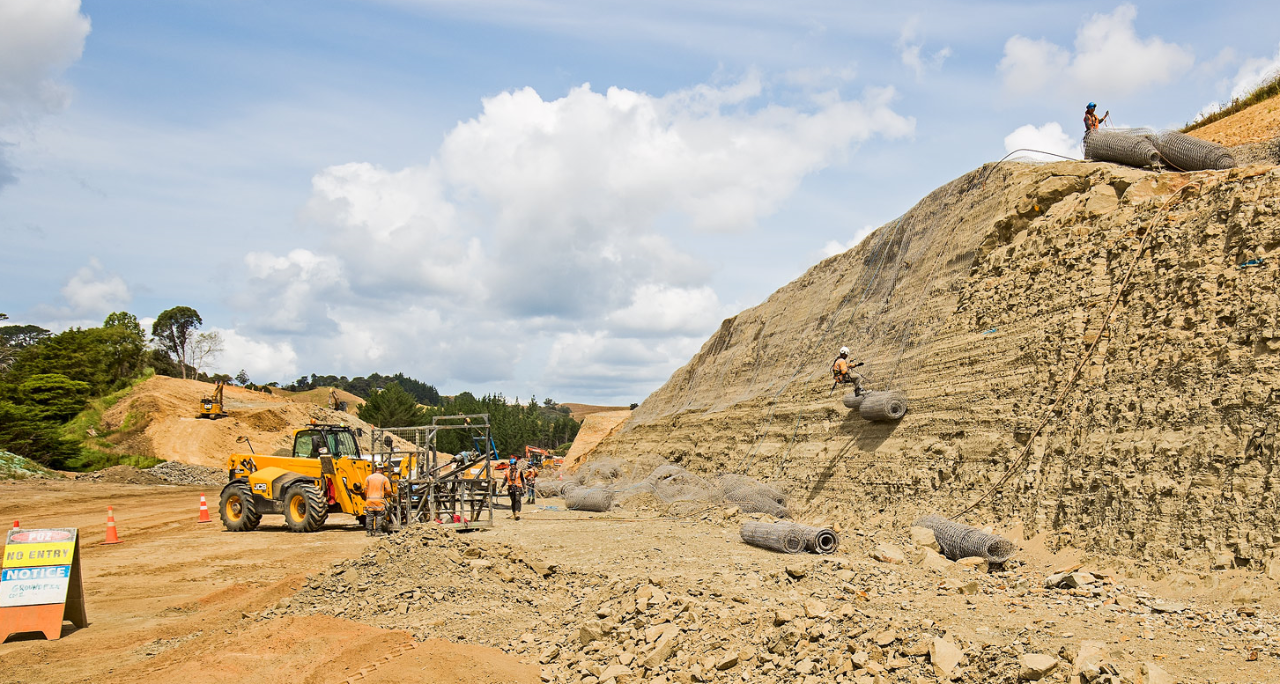NZ Business
Infrastructure projects set to play key role in post-Covid recovery

Infrastructure projects will play a vital role in helping New Zealand recover from the economic disruption caused by the Covid-19 pandemic and the actions taken to contain it.
It is an opportunity to build productive assets that will leave a lasting and positive legacy for future generations.
The question now is whether as a nation we can together develop an ambitious long-term strategic vision for New Zealand and invest in the infrastructure to support it.
There is no shortage of projects that could be fast-tracked. However, it’s important that we don’t just build ‘shovel-ready’ projects but ‘shovel-worthy’ projects that are future fit for purpose and prime New Zealand for success in a world recovering from Covid-19.
"It’s important that we don’t just build ‘shovel-ready’ projects but ‘shovel-worthy’ projects that are future fit for purpose and prime New Zealand for success in a world recovering from Covid-19."
Karl Nicholson, Head of Resources, Energy and Infrastructure, ANZ New Zealand Ltd.
The best infrastructure investments will create jobs while being built and create future employment and support a long-term vision for New Zealand’s economy and society.
Officials have rightly spent the last few weeks fighting fires, but now is the time to begin thinking about how we can use the Covid-19 health and economic crisis as an opportunity.
Never has it been more attractive to live on a remote, food-producing island inhabited by educated, motivated and innovative people.
But we need a plan; a plan for an economy where some of our major exports (such as tourism and education) look very different.
What should New Zealand be known and renowned for in the future? How will we enhance the well-being of all New Zealanders and their environment?
Creating a vision for the future of New Zealand will help ensure money is invested in, and resources allocated to, projects that will have the greatest long-term beneficial effect, not simply where short-term demand is highest.

Once we have a vision for New Zealand, the list of existing infrastructure projects can be prioritised according to which best align with the plan.
In a post-Covid world, hospitals, water and internet connectivity may take precedence over tourism infrastructure and roads.
There is an opportunity for Te Waihanga, the recently established Infrastructure Commission, to influence long-term infrastructure strategy and ensure its delivery continues across government cycles.
It’s also important that procurement processes continue to access the best offshore technology and expertise. This will reduce project risk, direct specialised talent to where it’s most needed and provide invaluable knowledge transfer for the local construction and engineering sector.
Projects such as the $709.5 million Puhoi to Warkworth motorway are a great example of this principle in action.
The Public Private Partnership (PPP) project is being delivered by the Northern Express Group (NX2) which has sub-contracted Fletcher Construction and Spanish firm Acciona Infrastructure to build the four lane road.
Acciona has brought its extensive experience in roads and bridges, railways and tunnels, in 30 countries on five continents, including its high sustainability standards.
The contractors are aiming to meet the Greenroads Silver standard - an international sustainability certification system that is specific to the design and construction of roading projects.
Accessing foreign expertise will be no easy feat in the near future, with travel and migration controls likely to continue.
Many foreign skilled workers who had been employed here returned home to avoid lockdown in New Zealand.
It’s unclear when they will be able to return.
If restrictions on short-term business travel and quarantine periods continue it will be difficult to import foreign talent, especially on a temporary basis –and there are some things, like installing wind turbines on remote, wind-swept hills, that just can’t be done by Zoom.
Competition for talent and expertise will also intensify as governments around the world clamber to invest in stimulatory infrastructure builds.
Some of the gaps can be filled by domestic training programmes but this will take time – airline engineers don’t become water engineers overnight.
Everyone acknowledges the need to stimulate the New Zealand economy and act quickly.
Infrastructure can form an important part of the solution.
However, it is important we select projects based also on their long term environmental and social impact, so that we can develop a more sustainable New Zealand, as well as providing jobs and supporting the economy.
Making courageous and ambitious decisions in the selection of ‘shovel-worthy’ projects and keeping the door open for international technology and expertise will ensure infrastructure builds will be fit for future generations – after all they’re the ones likely to be picking up the bill.
This article was first published in INFINZ Journal – June 2020.
Karl Nicholson is the Head of Resources, Energy and Infrastructure at ANZ New Zealand Ltd.
RELATED ARTICLES
NZ Media Releases
Stuart McKinnon appointed MD Institutional ANZ NZ
NZ Business